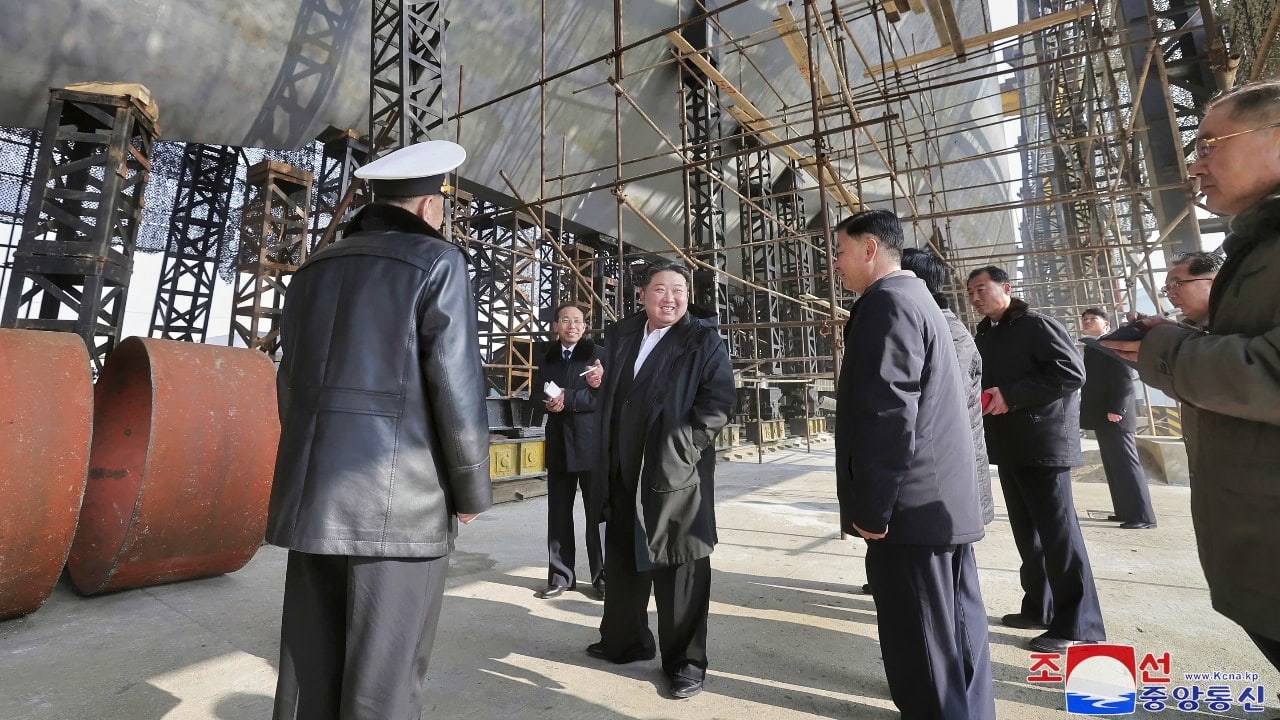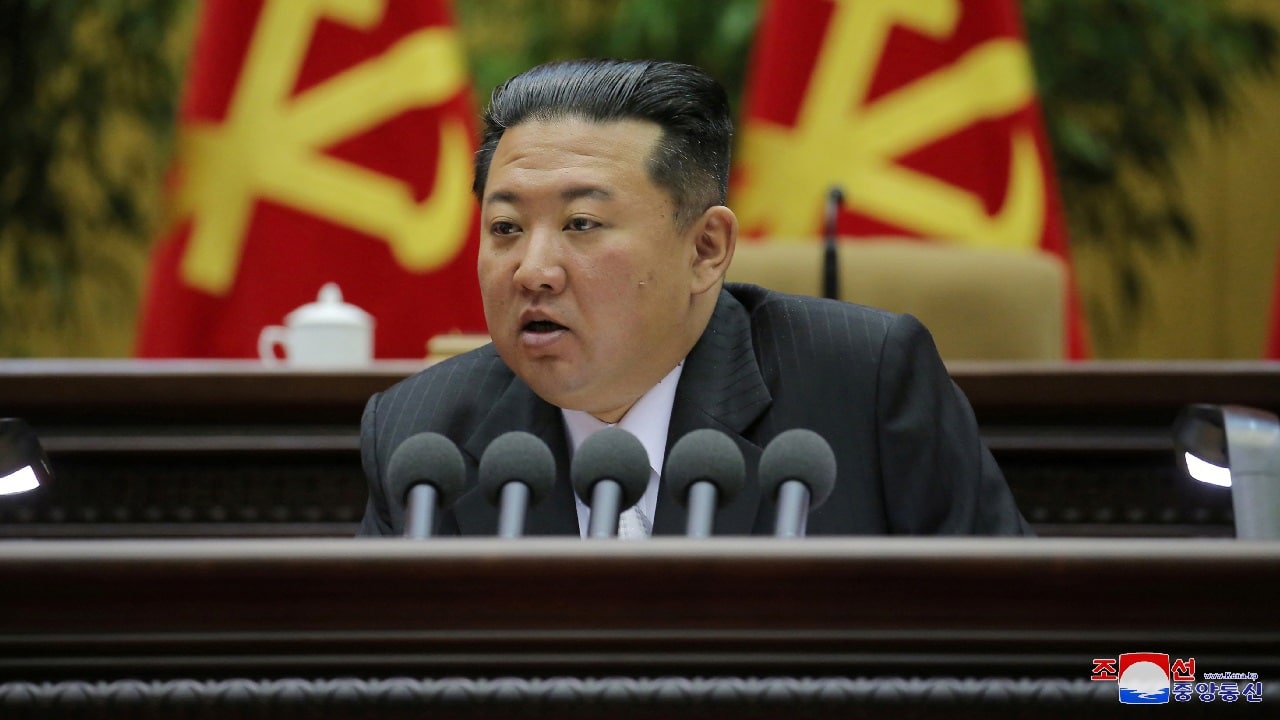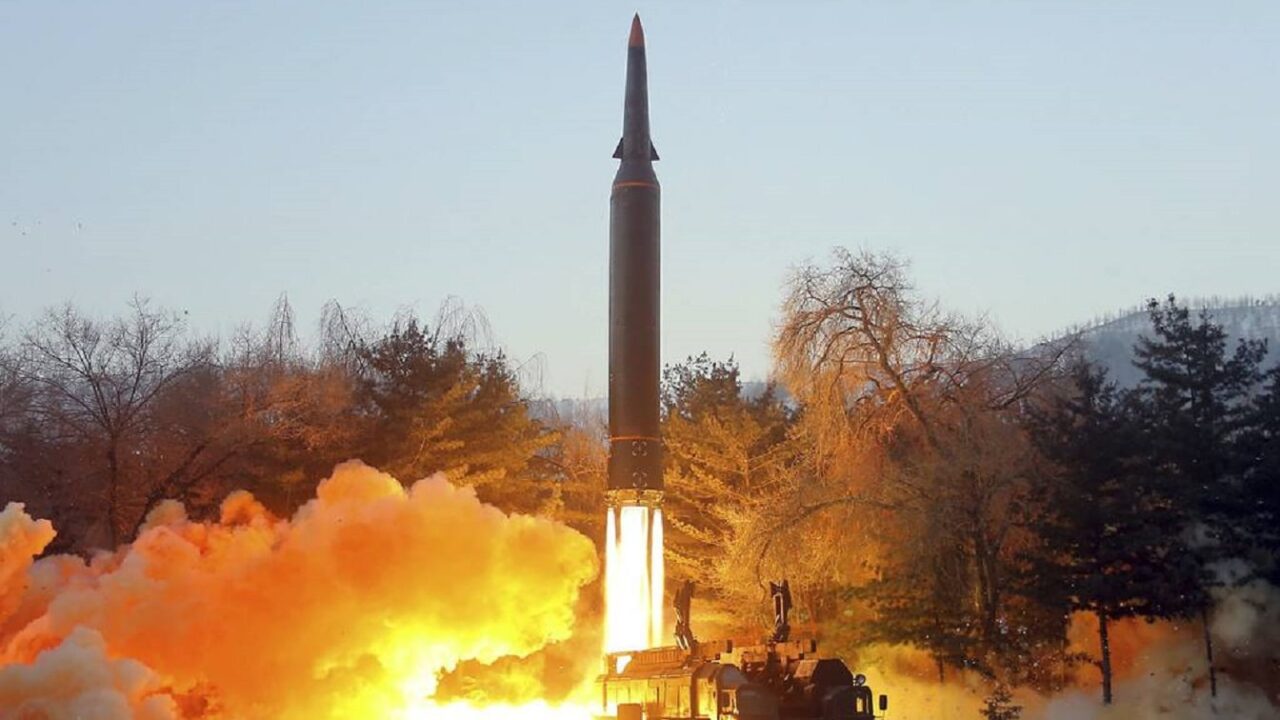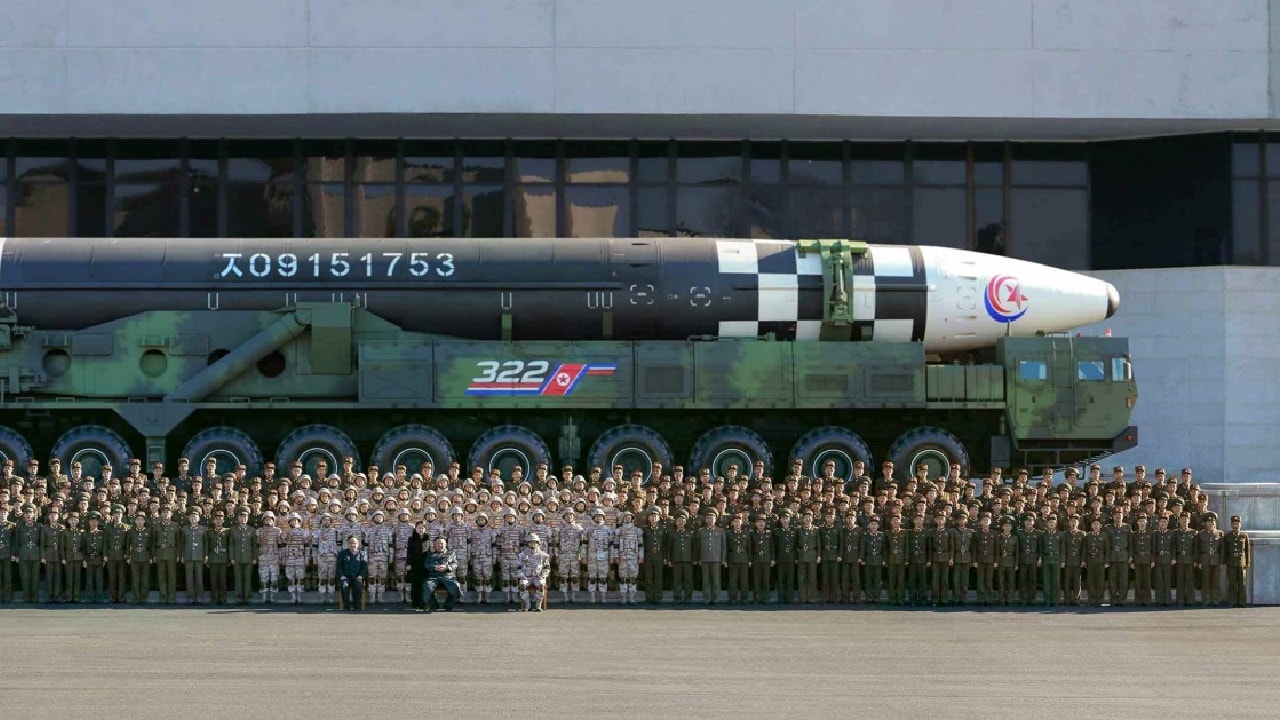North Korea and the Change Question: More than two decades ago, a defense and foreign affairs writer could visit China and not be constantly harassed by the Ministry of State Security’s secret police. The relatively relaxed security regime of that time was why I was able to engage in a small project I had been wanting to pursue for some time and to do so without being arrested, deported, or both.
Specifically, I took the opportunity to speak with several colleagues based in Beijing about their close neighbor that the Chinese keep propping up economically every year, the Democratic People’s Republic of Korea (DPRK).

North Korea Nuclear Submarine. Image Credit: KCNA.
The overall theme of my inquiries was why North Korea never changed from its standing as the world’s most isolationist and totalitarian Stalinist state into something more modern, open, and less repressive.
North Korea: Change Is a Dirty Word
Conventional wisdom that changes in a political system could solve many of North Korea’s societal problems. The most prevalent of these is that the country cannot feed itself. It has been so for a long time, with the worst point being the 1990s famine, the “Arduous March” (고난의 행군), when 2 million or more North Koreans starved to death.
Conditions since have improved—though slightly—and to this day much of the country is starving at least half the time. The UN World Food Program estimates that 10.7 million people, or more than 40 per cent of the population, is malnourished.
But even with this precarious internal situation, change was just not possible, I was told. Change is not within the nature of the regime, I heard, and thanks to the relentless, overpowering propaganda and the pervasive cult of personality of the ruling Kim family, it would not be in the nature of the population to even think that the country had to change.
The identity of the state and of the Kim family regime are indistinguishable from one another in the eyes of the population. North Korea’s current leader, Kim Jong Un, is the son of the previous dictator, Kim Jong Il, and the grandson of the nation’s founder, Kim Il Sung, who is still worshiped as a god. It is one of the longest-ruling political dynasties in the world.
The Army That Has a Country
About a year before I began conducting my own personal inquiry, the late Christopher Hitchens took a trip to Pyongyang, capital of the so-called Hermit Kingdom.
Writing in Vanity Fair about the daily life and the plight of the ordinary North Korean, Hitchens observed that the country was not unlike what was once said of Prussia: “It was not a country that had an army, but that it was an army that had a country.”
And in North Korea’s case, it is not a small army. The DPRK’s military ranks as the world’s fourth-largest, with 1.3 million active-duty personnel and 7.6 million reservists. It totals one-third of the total population of 25.9 million.
This explains another passage in Hitchens’ long profile of the DPRK: “You see military uniforms on about every 10th person. Partly this is a means of [imposing] additional regimentation for the society, and partly it’s a solution to the unemployment problem.”
It also consumes huge sums of money. In 2024, defense spending accounted for 16 percent of the North Korean state budget.
Despite the big defense budgets, the hardware in the North Korean arsenal has largely been outdated. However, Russian President Vladimir Putin recently came riding to the rescue. Putin’s forces have become dependent on the DPRK for millions of artillery shells and other munitions, and, more recently, North Korea sent thousands of soldiers to the front lines in Ukraine.
In return for North Korea’s providing cannon shells and cannon fodder for Moscow to wage unending war on Ukraine, the former KGB operative who rules Russia is now willing to provide the DPRK with all manner of defense technology. This includes support for Kim’s ballistic missile programs, new fighter aircraft, deliveries of oil, and so on—everything that the North Korean leader needs to keep building and modernizing his already massive military machine.
The Fear in Foreign Capitals
On top of it all, North Korea is one of nine countries in the world that possesses nuclear weapons, and Kim has made expansion of this program a priority. No one really knows how many warheads North Korea has, and no one knows whether or how soon Kim would be able to place one of them on top of a ballistic missile. Some experts claim he can.
The fear in foreign capitals that Kim might someday be able to attack another nation with a nuclear strike is growing.
Last October, South Korean President Yoon Suk Yeol publicly showcased his country’s Hyunmoo-5 conventionally armed ballistic missile, which is designed to penetrate North Korean underground command bunkers.

North Korean leader Kim Jong Un speaks during the 2nd Conference of Secretaries of Primary Committees of the Workers’ Party of Korea (WPK), in this photo released on March 1, 2022 by North Korea’s Korean Central News Agency (KCNA). KCNA via REUTERS.
“If North Korea attempts to use nuclear weapons, it will face the resolute and overwhelming response of our military and the ROK-US alliance,” Yoon said during the unveiling of the weapon, referring to the United States as the South’s primary military partner. “The North Korean regime must now break free from the delusion that nuclear weapons will protect them.”
But greater than the fear in some circles that Kim might use a nuclear weapon is the fear that his regime could implode. This would create a sudden and unplanned reunification of the Korean peninsula, to be governed by the South Korean half of the nation.
“This is the great nightmare for every nation that has a stake in what happens to North Korea next,” said more than one of those in Beijing—both Chinese and expat—that I spoke to on the subject in the early 2000s.
Everyone was singing the same song: “North Korea will never change because no one wants it to. And those that could be most affected want it to stay just as it is.”
Aftermath of Collapse
The reasons are simple. If North Korea collapses, the newly unified nation would continue to be an ally of the US, even more so than before. For a U.S. ally to now border on Russia and China is a nightmare for those two nations.
Then there is Japan. The populations of both Koreas have traditional enmity towards the Japanese dating back centuries. If the two Koreas became one, and they no longer have each other to worry about as enemies, they might someday brandish their army and their arsenal of nukes in Japan’s direction.
The one nation not part of the region but that also has a major interest in what happens on the peninsula is the United States. But North Korea collapsing under its own horrendously bad management is also not Washington’s first choice.
Interviewed in 2006 in The Atlantic, U.S. Army Special Forces Col. David Maxwell described the likely aftermath and staggering cost of such an eventuality, saying, “It could be the mother of all humanitarian relief operations.”
But the one country that dreads the possibility most of all is none other than South Korea. Seoul would have to assume responsibility for the moonscape that is the infrastructure, agricultural status and overall conditions of North Korea.

North Korean Missile Launch. Image Credit: Creative Commons.
In Berlin I spoke with German officials familiar with the negative economic impact of integrating the former-communist German Democratic Republic into the federal republic. They described their South Korean colleagues as horrified at the prospect of having the North, which is far poorer than the South now than East Germany then was in comparison with the West, abruptly fall into their hands.
“The South Koreans have had people here in Germany studying the aftereffects of our reunification for more than 30 years,” said one ministry functionary in Berlin. “What their research reveals to them scares them.”
Therefore, it is far easier and far cheaper, said one colleague in Beijing some years ago, “to keep doing what has been done for decades. Food aid, economic support, trade incentives, energy assistance—whatever little the NGOs and other aid organizations are permitted by the Kim regime to keep providing.”
“This will keep working – to keep the place from collapsing – until one day it stops working. Problem is,” he said, “is that no one wants to think about what to do when it does stop working. There will be plenty of choices – and all of them bad ones.”
About the Author: Reuben F. Johnson
Reuben F. Johnson is a survivor of the February 2022 Russian invasion of Ukraine and is now an Expert on Foreign Military Affairs with the Fundacja im. Kazimierza Pułaskiego in Warsaw. He has been a consultant to the Pentagon, several NATO governments and the Australian government in the fields of defense technology and weapon systems design. Over the past 30 years he has resided in and reported from Russia, Ukraine, Poland, Brazil, the People’s Republic of China and Australia.

